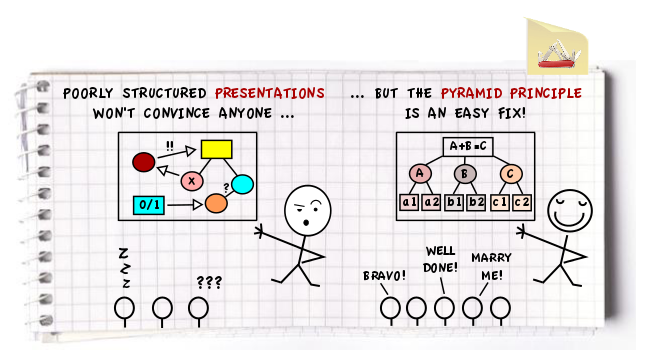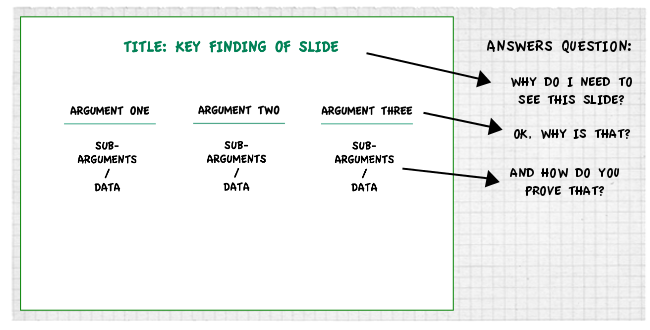Warning: file_get_contents(): php_network_getaddresses: getaddrinfo failed: Name or service not known in /www/htdocs/w00e5436/Handbook/wp-content/plugins/digg-digg/include/dd-class.php on line 1202
Warning: file_get_contents(http://feeds.delicious.com/v2/json/urlinfo/data?url=http%3A%2F%2Fhandbookofawesome.com%2F2012%2F01%2Fpresenting-like-a-pro%2F): failed to open stream: php_network_getaddresses: getaddrinfo failed: Name or service not known in /www/htdocs/w00e5436/Handbook/wp-content/plugins/digg-digg/include/dd-class.php on line 1202
“Your presentation is a confusing jumble of useless information with a wino’s spittle of unsupported conclusions” (Dilbert)

What’s a surefire way to hold a fantastic presentation that ends in a standing ovation? That’s hard to say.
What’s the recipe for a mind-bogglingly crappy presentation? Much easier.
You take one speaker who’s about as charismatic as a soggy biscuit, add a topic that floats in its own stratosphere of oxygen-starved tedium and put everything into a structure about as clear and logical as a Jackson Pollock-painting. Ta-da, you’re ready to go! Just be sure to do the humane thing and hand out razor-blades and cyanide pills to your audience beforehand!
While there may not be an easy solution to a tedious topic or an acute lack of charisma, there is one quick fix that can be easily applied to the structure of any presentation. In fact, it’s so easy and reliable that pretty much every consultancy on the planet uses it to make their presentations harder-hitting! It was invented by Barbara Minto decades ago and is called the Pyramid Principle. It’s a very simple and effective way of making presentations and written documents as convincing as possible.
The basic concept sounds like a no-brainer: you make statements first and then back them up with arguments. Let’s use a counter-example to demonstrate why this is a good idea:
Clowns have really big noses.
Clowns have really big feet.
Clowns wear lots of make-up.
For all these reasons, clowns are really creepy.
The above was not in pyramid format, so it sort of left the reader wondering where the hell I was going with my initial description of clowns. What I should’ve done (if I really wanted to convince someone of my viewpoint) is the following:
Clowns are creepy (main argument)
(Why? – Sub-arguments)
- They have really big noses
- They have really big feet
- They wear lots of make-up
This is much better already, since the reader knows right from the start what the point is.
Basically, you build your presentation top-down in the shape of a pyramid, backing up your main arguments with sub-arguments, and those sub-arguments with sub-sub-arguments. From the audience’s point of view, this means you always know why data and supportive arguments are being presented. It’s much more effective than the other way around, where you present random sounding arguments, and then only later inform the audience what you’re trying to justify. After all, you’re not a film director trying to surprise the audience with a dramatic plot twist at the end (“Surprise! It was the butler! And our company is actually bankrupt!”). You just want to convey your message as convincingly as possible.

Say you’re preparing a PowerPoint presentation, how would you implement the Pyramid Principle exactly? Basically, you want to use it throughout the presentation:
- On the level of the entire presentation, you want to state your main message and key findings on the very first slides, and say that you will be justifying these throughout the show. Think about why people are listening to the presentation in the first place and what are the vital pieces of information they need. Present these first.
- On the level of individual slides, you always put the most powerful argument as the title of the slide, and then justify it in the slide itself with sub-arguments and data. Basically, the titles should be so insightful and self-contained that the audience could understand the key findings of your presentation just by reading the headings! A good way to approach this is to start out by writing only the titles of the slides, then seeing if they form a coherent and convincing storyline.
- Depending on how long your presentation is, you might also want to apply this method to each section, i.e. state the main message and relevant key findings at the beginning.
- In each case, make sure you group your sub-arguments logically so that they relate to each other and actually back-up your main statements. Ideally, they will pre-empt the most obvious questions from you audience.

As you can see, it’s not exactly rocket science (nothing is, not even rocket science), but it is an easy way to make your presentations and any written documents more structured and logical. Of course not everything has to be rigorously structured, so probably it’s best not to use the principle in e.g. eulogies or best man’s speeches, but otherwise we highly recommend it!









